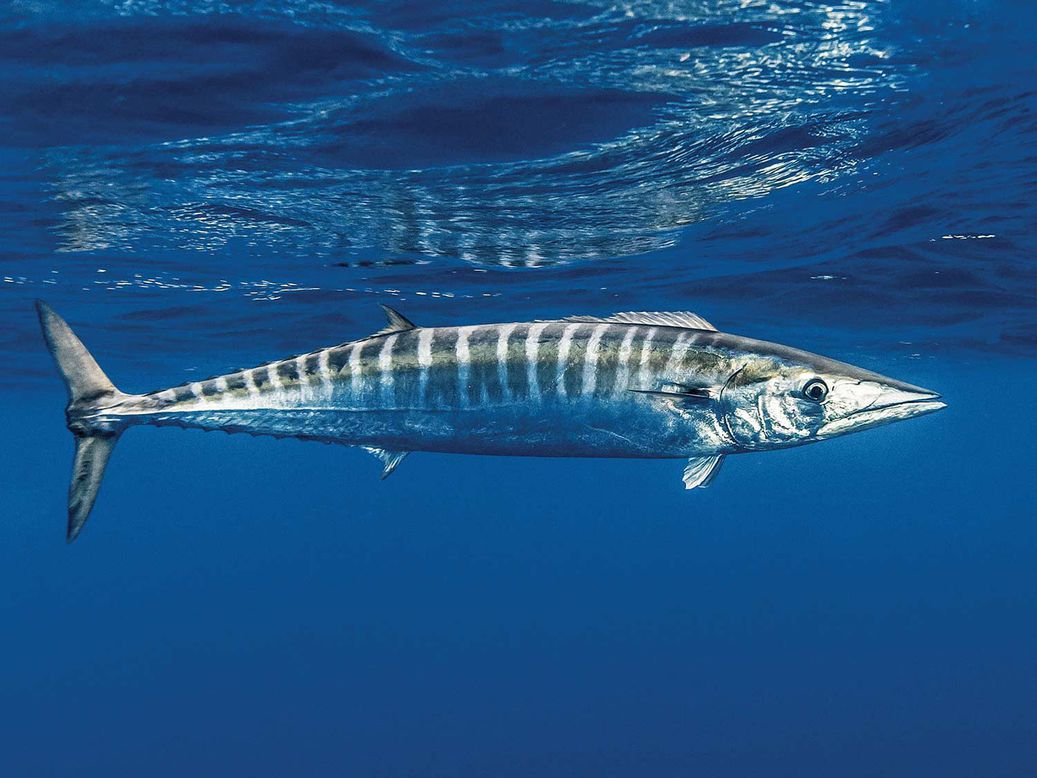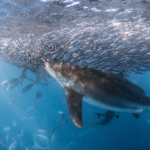Article Courtesy: marlinmag.com | Originally Published: 10/20/2021 | Click here for original article
Wintertime Wahoo Fishing in the Bahamas
The pursuit of wahoo is a relatively easy way of fishing—and catching. There are many teams who have perfected the craft and have had great success with it. The time of year and the conditions are crucial if you want to capitalize on this tasty “fast food”; just watch those teeth.
Late fall and wintertime has always been the best wahoo fishing for me, especially in the Bahamas, when the weather and water temperatures are cooler than normal. But fishing in the wintertime usually means it’s going to be rough, so if you’re lucky enough to find some calm days from November through March, by all means, get out there and give it a go.
While many captains prefer to fish for wahoo on an outgoing tide, I’ve found that in San Salvador, there can be a great bite at the bottom of the incoming tide as well. If you can wait through the lull of slack high, you’ll find that they will start back up once the water gets moving again. However, San Sal isn’t the only Bahamas island option to target wahoo—Harbour Island and Chub Cay are also good, but they don’t serve up the monsters that San Sal is known for. Even in Bimini, where the 100-pounder is considered the holy grail, I truly believe that there is a 200-pounder out there waiting for me in San Sal, merely because of the huge fish that are landed there every year. That’s my No. 1 pick.
Chub Cay is my second-favorite area to fish for wahoo in the Bahamas, and most of the fish caught there will be in 20- to 30-pound range, with the occasional 50-pounder. Chub can also provide you with a good bite, but you need to get after it early. If you start just before first light, the bite is generally good and will continue for a couple of hours. I find that the tide matters less in Chub, so take advantage of the low-light conditions, and once the sun comes up, switch over to marlin fishing.
Cay Sal Bank isn’t void of epic days either, that’s for sure, but due to the difficulty with Bahamian customs regulations/procedures right now, it’s nearly impossible to fish there, unfortunately.
On Coin Operated, we fish five rods: two wire lines on Lindgren-Pitman electric reels on the shorts, two 80s on the longs, and one 80 down the middle. Heavy tackle and nearly indestructible wire line make getting the big ones boatside in good shape possible, so don’t skimp on the beefiness.
For the shorts, we employ a 48-ounce trolling lead; on the longs, we use 24 ounces; and the shotgun seems to work best with a 16-ouncer. We set the shorts 100 and 150 feet from the transom; longs at 200 and 250 feet; and the center rigger goes out between 300 to 350 feet. Staggering your spread will keep everything from getting tangled if you get too far on top of the edge —and into the barracudas—and have to “Crazy Ivan” yourself back out in a hurry; all of our lines are marked with color-corresponding floss so the spread remains consistent with no questions.
Lures are an easy pick. Numerous manufacturers make that a no-brainer, with most of them providing a retail option for lures that are specifically designed for wahoo fishing, with cowbells being a favorite. Wahoo lures come in a variety of sizes and colors, and we have used them all. Sea witches also catch a lot of fish, with colors such as purple-and-black, pink-and-white, red-and-black, and green-and-black making the most impact when paired with horse ballyhoos.
I will run the biggest lures closest to the boat—the medium-size ones on the longs, and the smallest one down the center. I also set up my lures with double stainless-steel hook-sets on 800-pound cable with both hooks facing the same direction and the cable extending 3 feet in front of the lure. Attach a quality ball-bearing swivel on the main line, attach the trolling lead, then a 60-foot section of 200-pound monofilament as a shock leader. Then crimp on the lure, and you’re ready to go.
Going fast and covering ground is the name of the game when it comes to targeting these pelagic speedsters, and most captains will troll in the neighborhood of 12 to 18 knots. I find that the 14-knot range is good for my program and what I’m doing, so plan on burning up some fossil fuel with this mission. If you feel like you aren’t getting bit as much as you should, or find you aren’t getting bites at all, try speeding up a little. The important thing is to present your lures where the fish are hanging out: right on the drop-offs. Constantly checking your bottom machine will keep you in the meat, so don’t forget to glance at it a little more often than you might normally.
Another tactic I use for lure presentation is to zigzag in and out of the strike zone along the drop-off, making sure to be fully on top of the ledge when I zig, and fully off and away from it when I zag. Once you hook a fish, be sure to circle back around the area again because wahoo enjoy their friends’ company and rarely stray from one another if they can at all help it.
Once you have hooked a fish, pull back and slow down to idle speed with both engines in gear to fight him. Never take the boat completely out of gear, and always watch the hooked fish. They are extremely fast and can get a jump on you before you even know what happened. Any slack in the line will cause your fish to go bye-bye—even on the wire, and especially on the gaff. Maintaining forward momentum is the key to landing your wahoo, so pay special attention to what is happening boatside.
The cooler months of fall and winter —at home and in the Bahamas—is the best time to try your hand at wahoo fishing. It’s really fun, easy to do and requires less “technical” skills than hooking sailfish on dead bait (as long as you never put the boat in neutral). Once you get the hang of it, wahoo fishing will provide great table fare for your next sashimi dock or house party.
This article originally appeared in the December 2021 print issue of Marlin.








